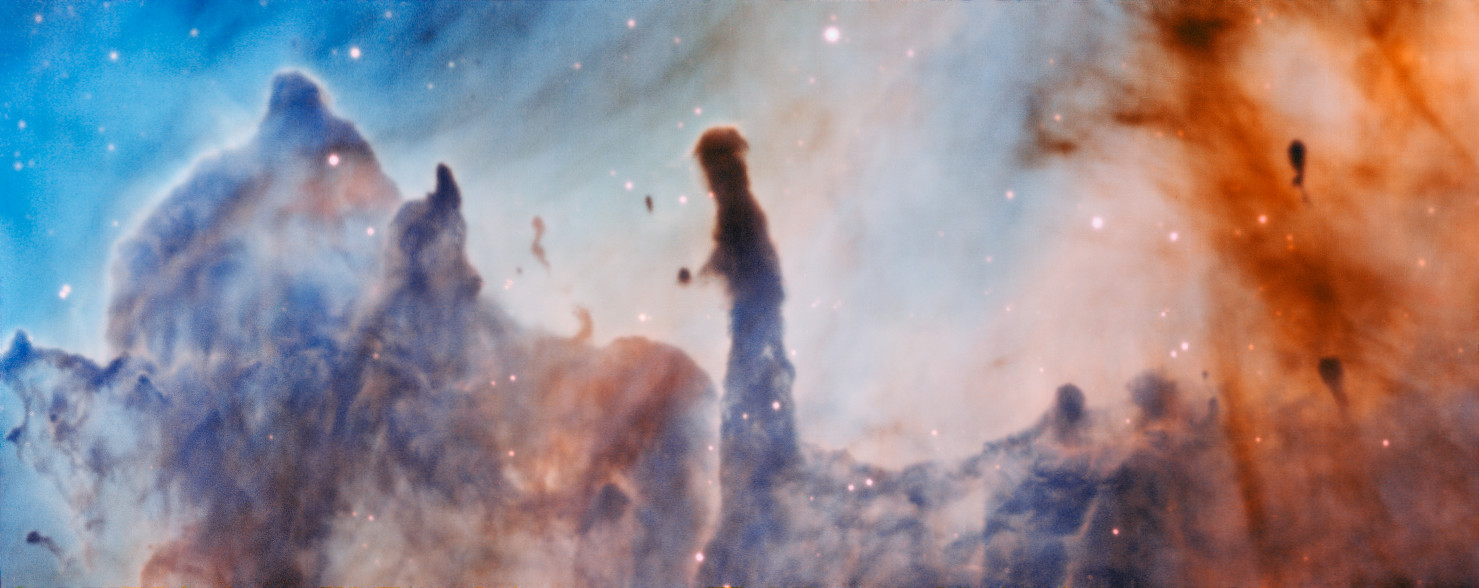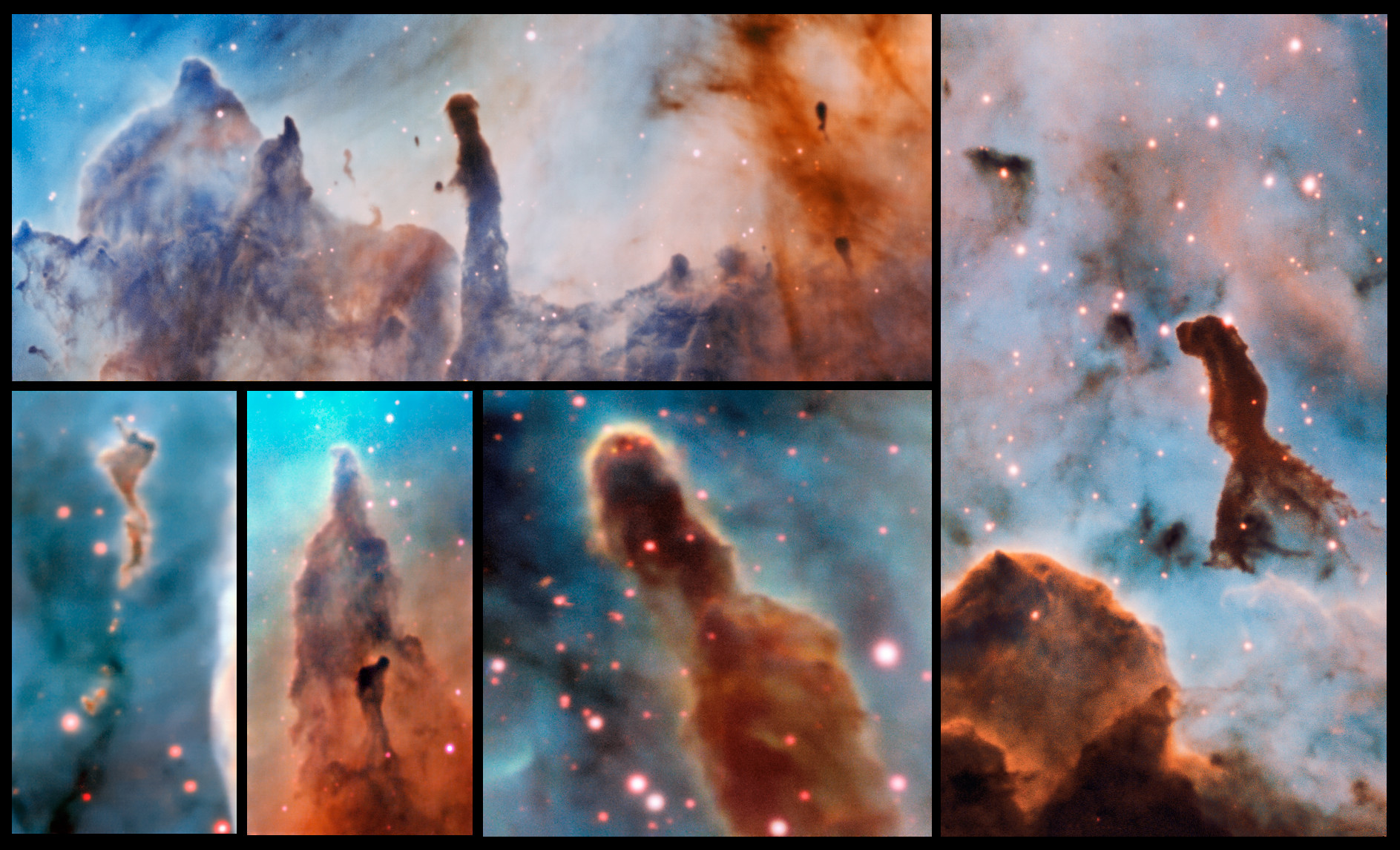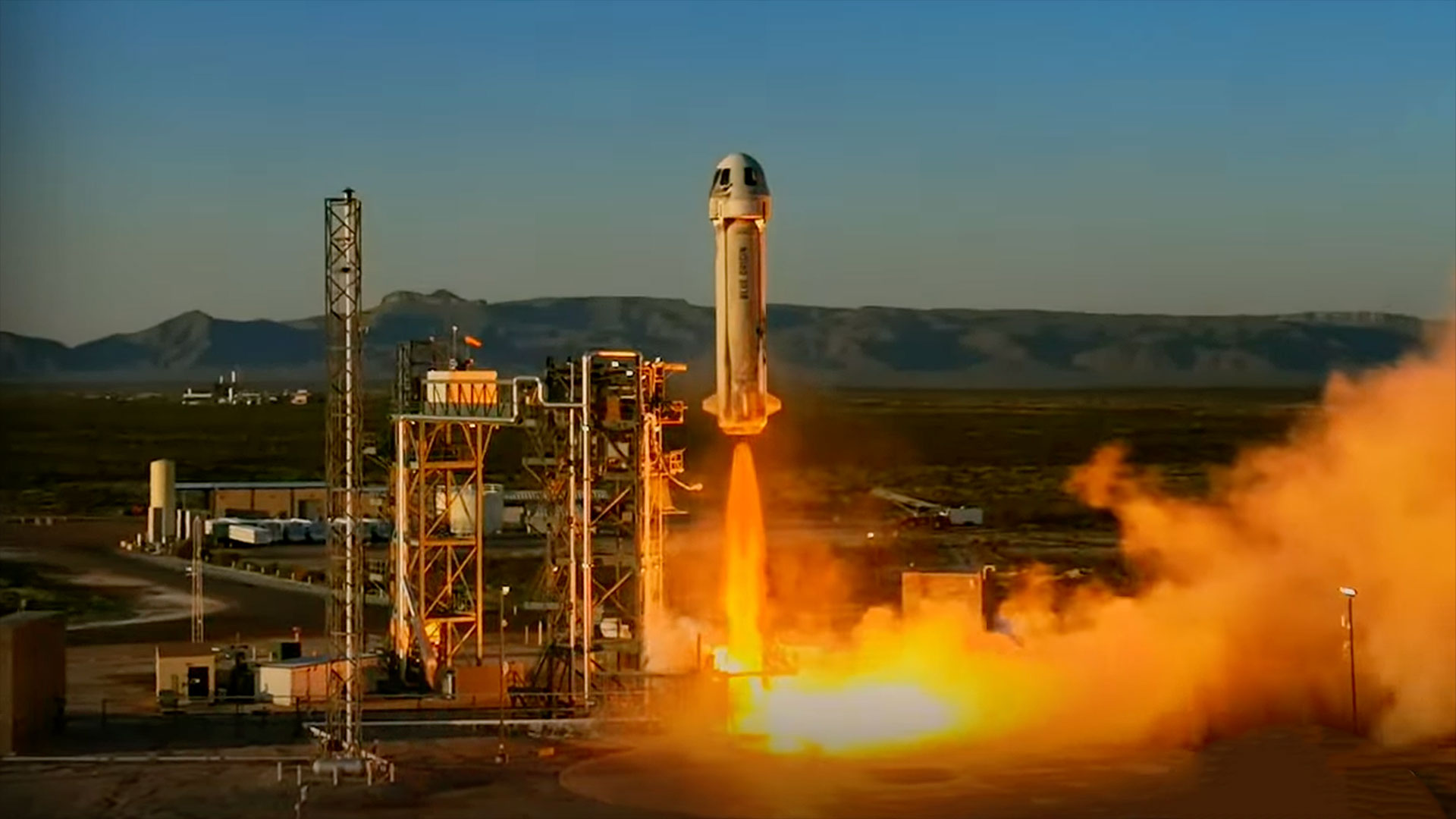Gorgeous Nebula Photos Reveal 'Pillars of Destruction'

Colorful new images of the Carina Nebula, a massive stellar nursery 7,500 light-years from Earth, reveal that new star births are destroying the very clouds of gas and dust from which they spawned.
Long, finger-like pillars and spires made of cosmic gas and dust protrude into space from all over the Carina Nebula. New images from the European Southern Observatory's Very Large Telescope in Chile show some of these pillars in unprecedented detail.
A team of researchers led by Anna McLeod, a doctoral student at ESO, captured the images with the telescope's Multi Unit Spectroscopic Explorer (MUSE) instrument, which can turn observations made from Earth into 3D images. Check out some incredible views of the Carina Nebula in the video below.
Clouds of hydrogen gas and dust in space provide great places for new stars to form. But when massive stars form, they betray their home nebula by bombarding it with damaging radiation.
The radiation is so strong that it strips atoms of their electrons and causes the gas to disperse. This process is called photoevaporation, and it's destroying the Carina Nebula and its pillars.
The ESO researchers who studied the new data and images of pillars in the Carina Nebula said they found a clear correlation between the amount of radiation coming from local stars and the dissipation of the dust and gas in the pillars.
Despite their name, these "Pillars of Destruction" are actually a lot like the iconic "Pillars of Creation," in the Eagle Nebula, a well-known cosmic region photographed by NASA's Hubble Space Telescope.
Breaking space news, the latest updates on rocket launches, skywatching events and more!
Scientists aren't yet sure whether the Pillars of Destruction will eventually be destroyed by the stars they create, but ESO plans to continue using MUSE to try to find out.
Email Hanneke Weitering at hweitering@space.com or follow her @hannekescience. Follow us @Spacedotcom, Facebook and Google+. Original article on Space.com.

Hanneke Weitering is a multimedia journalist in the Pacific Northwest reporting on the future of aviation at FutureFlight.aero and Aviation International News and was previously the Editor for Spaceflight and Astronomy news here at Space.com. As an editor with over 10 years of experience in science journalism she has previously written for Scholastic Classroom Magazines, MedPage Today and The Joint Institute for Computational Sciences at Oak Ridge National Laboratory. After studying physics at the University of Tennessee in her hometown of Knoxville, she earned her graduate degree in Science, Health and Environmental Reporting (SHERP) from New York University. Hanneke joined the Space.com team in 2016 as a staff writer and producer, covering topics including spaceflight and astronomy. She currently lives in Seattle, home of the Space Needle, with her cat and two snakes. In her spare time, Hanneke enjoys exploring the Rocky Mountains, basking in nature and looking for dark skies to gaze at the cosmos.


